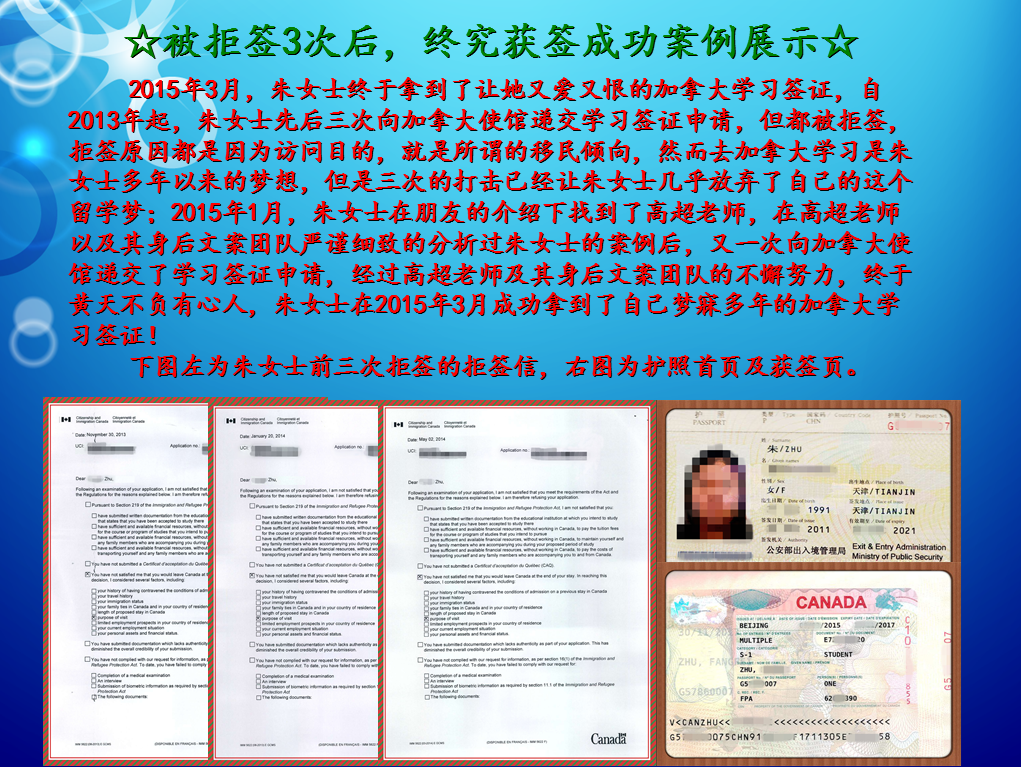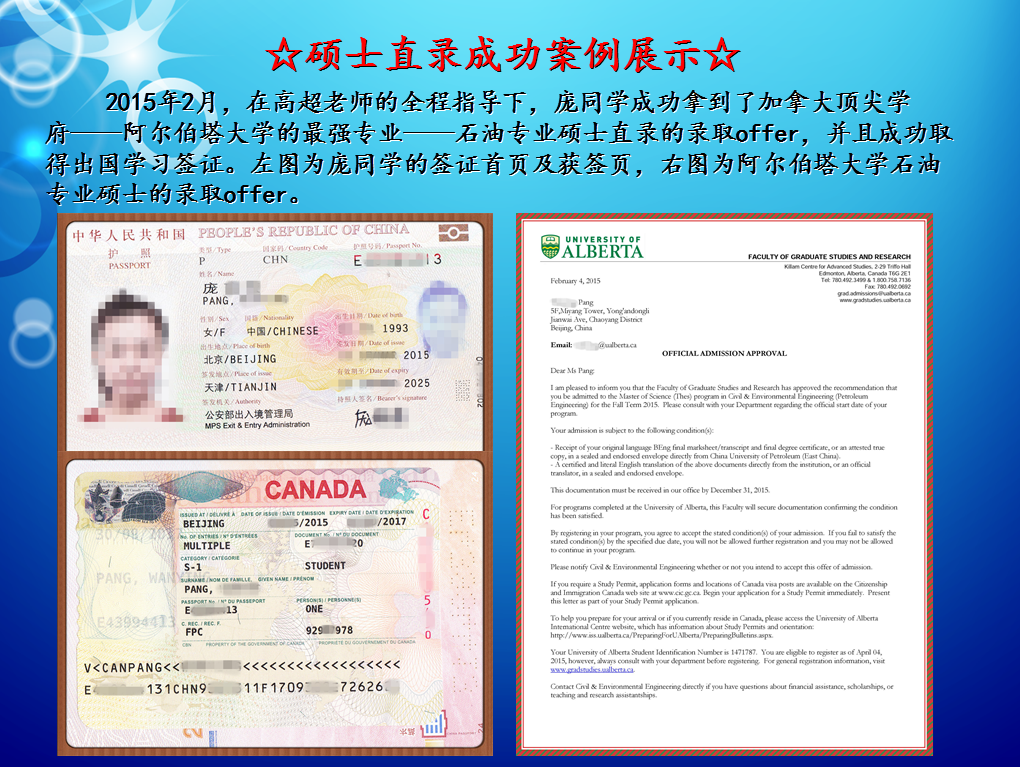SSAT阅读段落大意题(3).
2017-08-12 273阅读
5. The raisin business in America was born by accident. It happened in 1873 in the San Joaquin Valley of California. Many farmers raised grapes in this valley. That year, just bore the grape harvest, there was a heat wave. It was one of the worst heat waves ever known. It was so hot the grapes dried on the vines. When they were picked, California had its first raisin crop.
People were surprised to find how good raisins were. Everybody wanted more. So the San Joaquin farmers went into the raisin business. Today, of course, they do not let the grapes dry on the vines. They treat them with much more care.
In late August the grapes start to ripen. They are tested often for sweetness. The growers wait until the sugar content is twenty-one percent. Then they know the grapes are ripe enough to be picked.
Skilled workers come to the vineyards. They pick the bunches of grapes by hand. The workers fill their flat pans with grapes. They gently empty the pans onto squares of paper. These squares lie between the long rows of vines. They sit in the sun.
Here the grapes stay while the sun does its work. It may take two weeks or longer. The grapes are first dried on one side. When they have reached the right color, they are turned to dry on the other side. The grapes are dried until only fifteen percent of the moisture is lt. Then they have turned into raisins.
The raisins are rolled up in the paper on which they have dried. Trucks take them from the fields. They are poured into big boxes called sweatboxes. Each box holds one hundred and sixty pounds of raisins. Here, any raisins that are a bit too dry take moisture from those that have a bit too much. After a while they are all just moist enough.
The big boxes are trucked next to the packaging plant. They are emptied onto a conveyor belt that shakes the raisins gently. This knocks them from their stems. A blast of air whisks the stems away. The water bath is next. Then the plump brown raisins have a last inspection. They are again checked for moisture and sugar. Then they go on a belt to packing machines. Here they are poured into packages, which are automatically weighed and sealed. The raisins are now ready for market.
What is the main idea of this passage?
A. The creation of raisins in America was an accident. B. The process of raisin development requires multiple steps. C. Raisins on the grocery store shelf undergo a bri fermentation process. D. Raisins are cleaned thoroughly at the packing plant. E. California has been the leader in American raisin development.
6. In 1976, Sichan Siv was crawling through the jungle, trying to escape from Cambodia. By 1989, however, Siv was working in the White House, in Washington D. C., as an advisor to the President of the United States. How did this strange journey come about?
Like millions of Cambodians, Siv was a victim of a bloody civil war. One of the sides in this war was the Cambodian government. The other was a group called the Khmer Rouge. When the Khmer Rouge won the war, the situation in Cambodia got worse. Many people were killed, while others were forced into hard labor. Sometimes entire families were wiped out.
Siv came from a large family that lived in the capital of Cambodia. After finishing high school, Siv worked for a while with a Cambodian airline company. Later, he taught English. After that, he took a job with CARE, an American group that was helping victims of the war.
Siv had hope to leave Cambodia bore the Khmer Rouge took over the country. Unfortunately, he was delayed. As a result, he and his family were taken from their homes and forced to labor in rice fields. After a while, Siv managed to escape. He rode an old bicycle for miles, trying to reach Thailand where he would be free and safe. For three weeks he slept on the ground and tried to hide from the soldiers who were looking for him. Caught at last, he was afraid he would be killed. Instead, he was put into a labor camp, where he worked eighteen hours each day without rest. After several months, he escaped again; this time he made it. The journey, however, was a terrifying one. After three days of staggering on foot through mile after mile of thick bamboo, Siv finally made his way to Thailand.
Because he had worked for an American charity group, Siv quickly found work in a rugee camp. Soon he was on his way to the states. He arrived in June of 1976 and got a job-first picking apples and then cooking in a fast-food restaurant. Siv, however, wanted more than this; he wanted to work with people who, like himself, had suffered the hardship of leaving their own countries behind. Siv decided that the best way to prepare for this kind of work was to go to college. He wrote letters to many colleges and universities. They were impressed with his school records from Cambodia, and they were impressed with his bravery. Finally, in 1980, he was able to study at Columbia University in New York City. After finishing his studies at Columbia, Siv took a job with the United Nations. He married an American woman and became a citizen. After several more years, he felt that he was very much a part of his new country.
In 1988, Siv was offered a job in the White House working for President Reagan&aposs closest advisors. It was a difficult job, and he often had to work long hours. However the long hard work was worth it, because Siv got the opportunity to help rugees in his work.
What is the main idea of this passage?
A. Persistence and courage are global ideas. B. Siv covered a large area during his life. C. Siv persevered to become an American citizen D. Siv overcame numerous challenges to come to American and help others. E. Siv persevered to become an American citizen.
答案:BD
SSAT阅读段落大意题(3)SSAT阅读段落大意题(3)5. The raisin business in America was born by accident. It happened in 1873 in the San Joaquin Valley of California. Many farmers raised grapes in this valley. That year, just bore the grape harvest, there was a heat wave. It was one of the worst heat waves ever known. It was so hot the grapes dried on the vines. When they were picked, California had its first raisin crop.
People were surprised to find how good raisins were. Everybody wanted more. So the San Joaquin farmers went into the raisin business. Today, of course, they do not let the grapes dry on the vines. They treat them with much more care.
In late August the grapes start to ripen. They are tested often for sweetness. The growers wait until the sugar content is twenty-one percent. Then they know the grapes are ripe enough to be picked.
Skilled workers come to the vineyards. They pick the bunches of grapes by hand. The workers fill their flat pans with grapes. They gently empty the pans onto squares of paper. These squares lie between the long rows of vines. They sit in the sun.
Here the grapes stay while the sun does its work. It may take two weeks or longer. The grapes are first dried on one side. When they have reached the right color, they are turned to dry on the other side. The grapes are dried until only fifteen percent of the moisture is lt. Then they have turned into raisins.
The raisins are rolled up in the paper on which they have dried. Trucks take them from the fields. They are poured into big boxes called sweatboxes. Each box holds one hundred and sixty pounds of raisins. Here, any raisins that are a bit too dry take moisture from those that have a bit too much. After a while they are all just moist enough.
The big boxes are trucked next to the packaging plant. They are emptied onto a conveyor belt that shakes the raisins gently. This knocks them from their stems. A blast of air whisks the stems away. The water bath is next. Then the plump brown raisins have a last inspection. They are again checked for moisture and sugar. Then they go on a belt to packing machines. Here they are poured into packages, which are automatically weighed and sealed. The raisins are now ready for market.
What is the main idea of this passage?
A. The creation of raisins in America was an accident. B. The process of raisin development requires multiple steps. C. Raisins on the grocery store shelf undergo a bri fermentation process. D. Raisins are cleaned thoroughly at the packing plant. E. California has been the leader in American raisin development. 上12下
共2页
阅读全文留学咨询
更多出国留学最新动态,敬请关注澳际教育手机端网站,并可拨打咨询热线:400-601-0022
留学热搜
相关推荐
- 专家推荐
- 成功案例
- 博文推荐

Copyright 2000 - 2020 北京澳际教育咨询有限公司
www.aoji.cn All Rights Reserved | 京ICP证050284号
总部地址:北京市东城区 灯市口大街33号 国中商业大厦2-3层









高国强 向我咨询
行业年龄 12年
成功案例 3204人
留学关乎到一个家庭的期望以及一个学生的未来,作为一名留学规划导师,我一直坚信最基本且最重要的品质是认真负责的态度。基于对学生和家长认真负责的原则,结合丰富的申请经验,更有效地帮助学生清晰未来发展方向,顺利进入理想院校。
Amy GUO 向我咨询
行业年龄 17年
成功案例 4539人
一切的一切从现在开始.用自己的态度闯出一片天
薛占秋 向我咨询
行业年龄 11年
成功案例 1869人
从业3年来成功协助数百同学拿到英、美、加、澳等各国学习签证,递签成功率90%以上,大大超过同业平均水平。
Tara 向我咨询
行业年龄 7年
成功案例 1869人